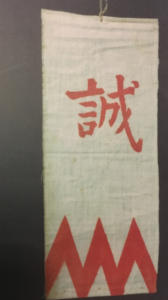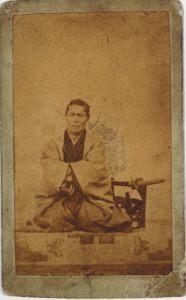
While much has been written about practical application versus philosophy in kenjutsu (Japanese swordsmanship), Hijikata Toshizo, vice-commander of the Shinsengumi, practiced kenjutsu to learn to “kill people,” according to Yuki Minizo.*
[The photograph of Hijikata Toshizo is used in Shinsengumi: The Shogun’s Last Samurai Corps, courtesy of the descendants of Sato Hikogoro and Hino-shi Furusato Hakubutsukan Museum.]
*Yuki Minizo is sometimes identified as a former Shinsengumi corps. However, technically he did not serve in the Shinsengumi. He was recruited by Kondo Isami after the Shinsengumi was reorganized as the Koyōchinbutai (“Pacification Corps”) in early 1868.



